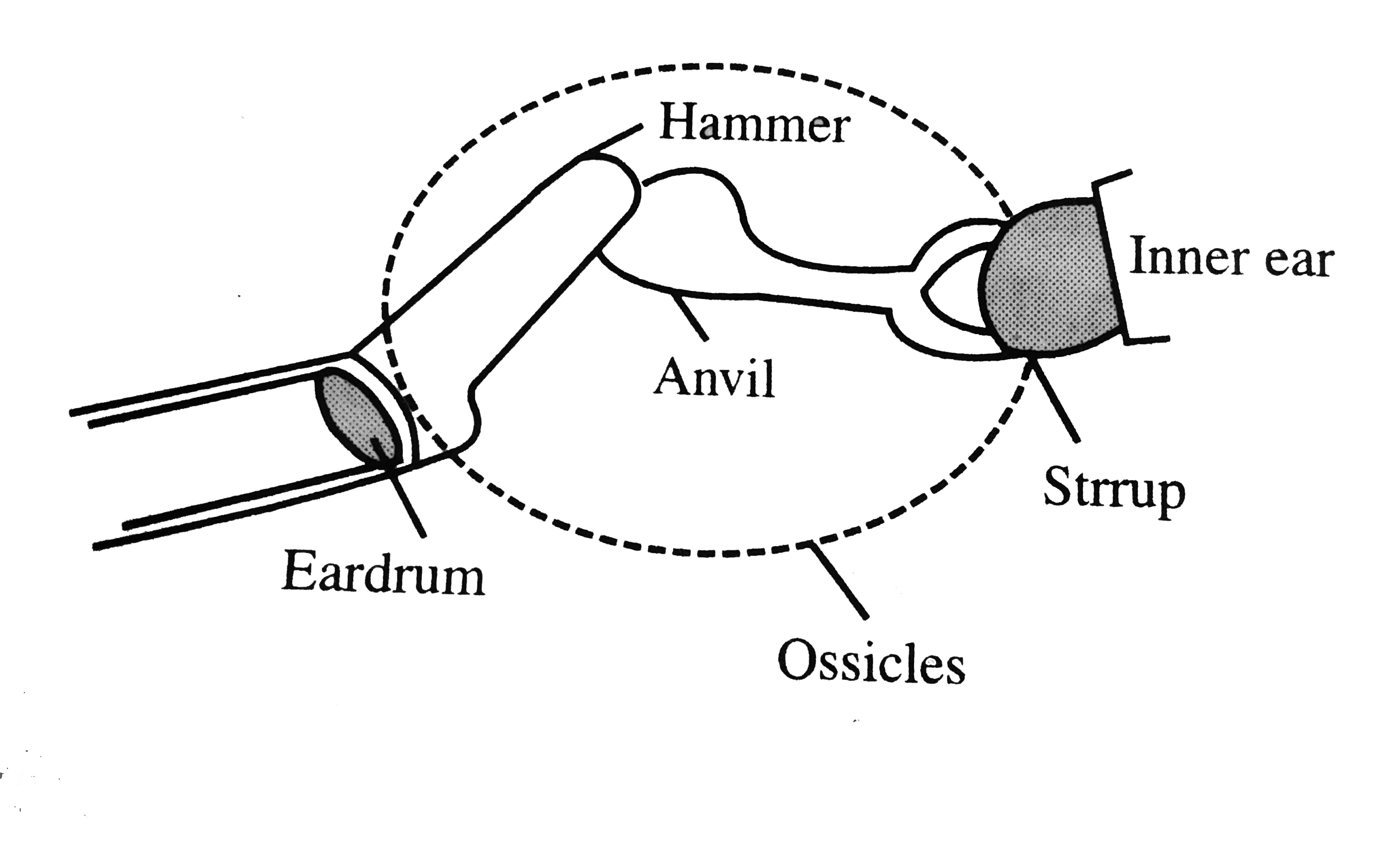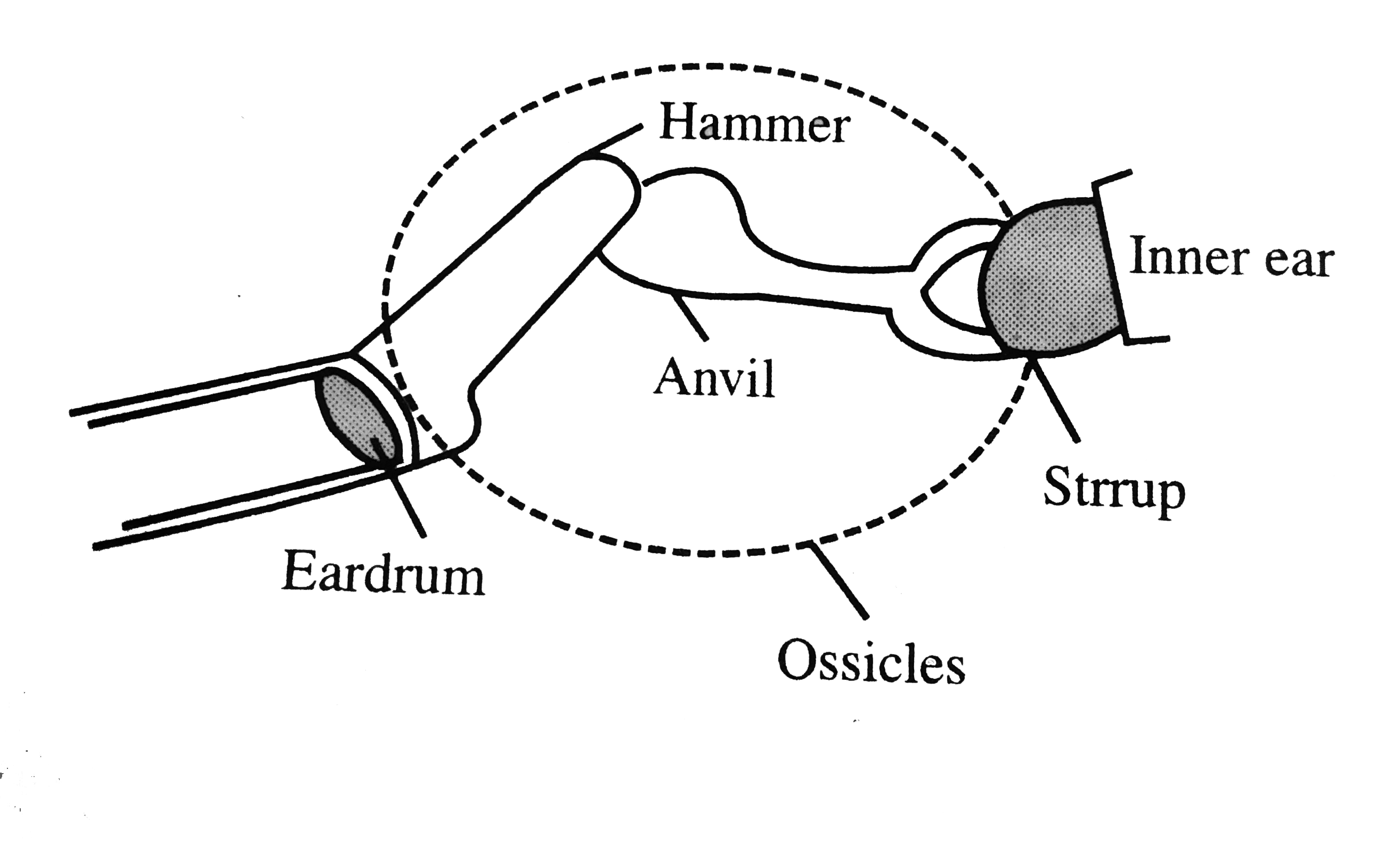Name tube that connects the middle ear to the pharynx.
Step-by-Step Solution:
1. Understanding the Anatomy of the Ear:
- The ear is divided into three main parts: the outer ear, the middle ear, and the inner ear.
- The outer ear includes structures such as the pinna and the tympanic membrane.
2. Identifying the Middle Ear:
- The middle ear contains three small bones known as ossicles: the malleus, incus, and stapes.
- The tympanic membrane separates the outer ear from the middle ear.
3. Connecting the Middle Ear to the Pharynx:
- The pharynx is located in the throat region and plays a role in both the respiratory and digestive systems.
- There is a specific tube that connects the middle ear to the pharynx.
4. Naming the Tube:
- The tube that connects the middle ear to the pharynx is called the Eustachian tube.
- It is also known as the pharyngeotympanic tube.
5. Function of the Eustachian Tube:
- The Eustachian tube helps to aerate the middle ear, ensuring that air pressure is equalized on both sides of the tympanic membrane.
- It also helps in draining mucus from the middle ear to the nasopharynx.
Final Answer:
The tube that connects the middle ear to the pharynx is called the Eustachian tube (or pharyngeotympanic tube).
---
- The ear is divided into three main parts: the outer ear, the middle ear, and the inner ear.
- The outer ear includes structures such as the pinna and the tympanic membrane.
- The middle ear contains three small bones known as ossicles: the malleus, incus, and stapes.
- The tympanic membrane separates the outer ear from the middle ear.
- The pharynx is located in the throat region and plays a role in both the respiratory and digestive systems.
- There is a specific tube that connects the middle ear to the pharynx.
- The tube that connects the middle ear to the pharynx is called the Eustachian tube.
- It is also known as the pharyngeotympanic tube.
- The Eustachian tube helps to aerate the middle ear, ensuring that air pressure is equalized on both sides of the tympanic membrane.
- It also helps in draining mucus from the middle ear to the nasopharynx.
The tube that connects the middle ear to the pharynx is called the Eustachian tube (or pharyngeotympanic tube).
Topper's Solved these Questions
- BOOK - ICSECHAPTER - NEURAL CONTROL AND COORDINATIONEXERCISE - (Review question) short answer26videos
NEURAL CONTROL AND COORDINATION
- BOOK - ICSECHAPTER - NEURAL CONTROL AND COORDINATIONEXERCISE - (Review question) long answer20videos
NEURAL CONTROL AND COORDINATION
- BOOK - ICSECHAPTER - NEURAL CONTROL AND COORDINATIONEXERCISE - (Review question) Differntiate the following14videos
NEURAL CONTROL AND COORDINATION
- BOOK - ICSECHAPTER - NEURAL CONTROL AND CO-ORDINATION EXERCISE - NCERT EXERCISES WITH ANSWER (DIFFERENTIATE BETWEEN)11videos
NEURAL CONTROL AND CO-ORDINATION
- BOOK - ICSECHAPTER - PHOTOMORPHOGENESIS IN PLANTSEXERCISE - REVIEW QUESTIONS (LONG ANSWER TYPE QUESTIONS)6videos
PHOTOMORPHOGENESIS IN PLANTS
Similar Questions
Knowledge Check
- Question 1 - Select One
Assertion:The Eustachian tube helps in equalising the pressures on either sides of the ear drum.
Reason:The Eustachian tube connects the middle ear cavity with the pharynx.AIf both assertion and reason are true and reason is the correct explanation of assertion.BIf both assertion and reason are true but reason is not the correct explanation of assertion.CIf assertion is true but reason is false.DIf both assertion and reason are false.
Based on the diagram drawn above in membranous labyrinth give a suitable term for each of the following descriptions: (1) The sensory cells that helps in hearing. (2) The part that is responsible for static balance of the body. (3) The membrane covered opening that connects the middle ear to the inner ear. (4) The fluid present in the middle chamber of cochlea. (5) The structure that maintains dynamic equilibrium of the body.
View Solution........... connects the cavity of the middle ear with the pharynx.
View SolutionMiddle ear has
View SolutionMiddle ear has
View SolutionWhat does middle ear contain ?
View Solution
When a sound wave enters the ear, it sets the eardrum into oscillation, which in turn causes oscillation of 3 tiny bones in the middle ear called ossicles. This oscillation is finally transmitted to the fluid filled in inner portion of the ear termed as inner ear, the motion of the fluid disturbs hair cells within the inner ear which transmit nerve impulses to the brain with the information that a sound is present. The theree bones present in the middle ear are named as hammer, anvil and stirrup. Out of these the stirrup is the smallest one and this only connects the middle ear to inner ear as shown in the figure below. The area of stirrup and its extent of connection with the inner ear limits the sensitivity of the human ear consider a person's ear whose moving part of the eardrum has an area of about 50mm2 and the area of stirrup is about 5mm2. The mass of ossicles is negligible. As a result, force exerted by sound wave in air on eardum and ossicles is same as the force exerted by ossicles on the inner ear. Consider a sound wave having maximum pressure fluctuation of 4×10−2Pa from its normal equilibrium pressure value which is equal to 105Pa. Frequency of sound wave in air is 332ms. Velocity of sound wave in fluid (present in inner ear) is 1500ms. Bulk modulus of air is 1.42×105Pa. Bulk modulus of fluid is 2.18×109Pa.
Q. If the person is using an hearing aid, which increase the sound intensity level by 30 dB, then by what factor the intensity of given sound wave change as perceived by inner ear?View Solution
When a sound wave enters the ear, it sets the eardrum into oscillation, which in turn causes oscillation of 3 tiny bones in the middle ear called ossicles. This oscillation is finally transmitted to the fluid filled in inner portion of the ear termed as inner ear, the motion of the fluid disturbs hair cells within the inner ear which transmit nerve impulses to the brain with the information that a sound is present. The theree bones present in the middle ear are named as hammer, anvil and stirrup. Out of these the stirrup is the smallest one and this only connects the middle ear to inner ear as shown in the figure below. The area of stirrup and its extent of connection with the inner ear limits the sensitivity of the human ear consider a person's ear whose moving part of the eardrum has an area of about 50mm2 and the area of stirrup is about 5mm2. The mass of ossicles is negligible. As a result, force exerted by sound wave in air on eardum and ossicles is same as the force exerted by ossicles on the inner ear. Consider a sound wave having maximum pressure fluctuation of 4×10−2Pa from its normal equilibrium pressure value which is equal to 105Pa. Frequency of sound wave in air is 332ms. Velocity of sound wave in fluid (present in inner ear) is 1500ms. Bulk modulus of air is 1.42×105Pa. Bulk modulus of fluid is 2.18×109Pa.
Q. Find the displacement amplitude of given sound wave in the fluid of inner ear.View Solution

